

 A new wine year is about to begin. We will see new trends, new issues will be discussed and decided, new legislation will be made. Here are some of the things that we think will be on the agenda for 2015.
A new wine year is about to begin. We will see new trends, new issues will be discussed and decided, new legislation will be made. Here are some of the things that we think will be on the agenda for 2015.
1. Organic wine I
The EU intends to review, and possibly renegotiate, some of the permitted additives and processes from the agreement on “organic wine” that was done in 2012. On the table is e.g. levels of sulphur, the use of reverse osmosis, and the maximum temperature for flash pasteurisation (currently at 70 C). It is sure to be exciting negotiations.
2. Organic wine II, sustainability
Will the debate on organics shift to focus on sustainability? In France there are today several different labels for sustainable viticulture. Champagne has one, the co-operatives have one, and more and more growers go for the agricultural label HVE, Haute Valeur Environnementale. There are several others and it will probably take all of 2015 to get to grips with what is what and what it means.
(Read our new book, Biodynamic, Organic and Natural Winemaking, if you want to know more about these issues and sustainability, and about permitted additives in winemaking.)
3. To plant or not?
The infamous (scandalous?) planting rights in Europe will change name to “planting authorisations”. The intention is that it will become easier to get authorisation for new plantings (not easy today!). But each country can only increase its acreage with 1% per year. The new rules will come into action until January 2016 but we are quite sure that the subject will be intensely discussed in 2015.
4. The renaissance of the natural cork
In 2004 Robert Parker predicted that the screw cap would become more popular than the natural cork as a wine bottle closure by 2015. He was wrong. The natural cork is still the dominant closure and today quite a few wine producers are returning to natural cork. In contrary to Parker’s predictions in 2004 the cork producers have invested heavily to control the issues leading to “cork taint”.
5. The renaissance of Spain, and others
We think that many people will want to (re-) discover Spain. It is a country with so great variations in climate and environment that there is an indefinite variation in wine styles. We also think that Chile will reach new heights with many smaller wine producers going for quality and individuality. And also Portugal, Languedoc-Roussillon, Sicily, Apulia (Puglia), Le Marche and, well, many other wine regions that we think will be worth pushing. But that will be something we will do all along the year. (And to many of these wine regions wine lovers can come on a wine tour with BKWine.)
We wish all readers a very happy New Year!
Britt & Per
PS: Recommend to your friends to read the Brief!
– – – – –
What’s on at BKWine Tours
- Chile and Argentina in South America, January 31 – February 15, 2015
- South Africa, February 27 – March 9, 2015
- Bordeaux, April 22-26
For more information please contact us on email or on phone (we’re on French time), or go to our wine travel site on www.bkwinetours.com!
We also make custom designed wine tours – on-demand tours for you and a group of friends, for your company (maybe to scout new winegrowers?), for a special event… We can combine winery visits and wine touring with other activities: gastronomic workshops, visit to an oyster farm, truffles hunting, cheese making, and more. More info on the custom designed and bespoke BKWine wine tours and travel here!
Wine tours in Finnish: We also do wine tours in Finnish. And in German, Norwegian, Spanish…
Do you want the latest news and updates on our wine travel activity? Subscribe here! (Second alternative BKWineTours.com)
From the World of Wine
Carmenère, French grape adopted by Chile
Did you drink a wine made from the Carmenère grape on November 24? Probably not. And maybe you were not even aware of the fact that this day was “World Carmenère Day”. But now you know for next year. The promoter is of course Chile. With a World Carmenère day the Chilean wine producers want to celebrate their very own grape.
Carmenère had a pretty shaky start to its career as Chile’s national grape. For a long time the producers thought they had Merlot planted in the vineyards. Around 20 years ago it was discovered that it was not. Instead it was Carmenère, the sixth red grape in Bordeaux. The Chileans were perplexed at first. Then they turned it into something positive. They adopted Carmenère and made it into their very own. Chile has a just over 8,000 hectares of Carmenère compared with 40,000 for Cabernet Sauvignon. So even if Carmenère is an important symbol for the Chilean wine industry, the quantity of Carmenère wine is limited. Read more about carmenère day.
If you are interested to really explore and discover the Carmenere wines and the country that produces them, then you can join us on a wine tour to Chile (and Argentina) with BKWine. Plan your next trip for February 2016.
Pernand Vergelesses 2012 Premier Cru Iles des Vergelesses, Domaine Luc et Lise Pavelot | Britt’s Wine of the Month
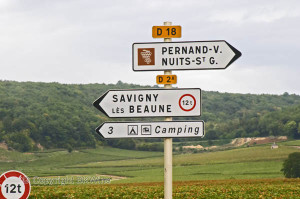 Pernand-Vergelesses has long been one of my favourite villages in the Côte d’Or. From many producers here I find that wonderful pinot fruit and elegance that I look for in a red burgundy. And in this wine from the excellent Domaine Pavelot, which is run by Luc and Lise Pavelot, I find just that. It has intense aromas and flavours of red berries, violets, roses and spices and a long, elegant and silky finish.
Pernand-Vergelesses has long been one of my favourite villages in the Côte d’Or. From many producers here I find that wonderful pinot fruit and elegance that I look for in a red burgundy. And in this wine from the excellent Domaine Pavelot, which is run by Luc and Lise Pavelot, I find just that. It has intense aromas and flavours of red berries, violets, roses and spices and a long, elegant and silky finish.
Luc and Lise Pavelot have 9 hectares in their village Pernand-Vergelesses and in the neighbouring village of Aloxe-Corton. They make 11 different wines. Iles des Vergelesses is the most important premier cru vineyard in Pernand Vergelesses. The wines here are often as good as a Corton Grand Cru. It is a gentle slope with a south-eastern exposure, ideal in Burgundy. The price is 22 euros from the property. More on the domaine: domaine-pavelot-pernand.com
You can immerse yourself (figuratively) in Burgundy wines on a wine tour to Burgundy with BKWine.
Vinexpo in June 2015 in Bordeaux
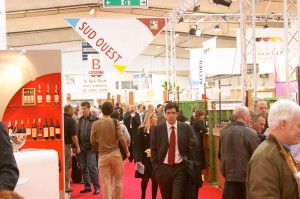 Vinexpo in Bordeaux is probably the world’s largest wine fair. Next edition, the eighteenth, will be on June 14-18, 2015. There are many wine fairs in the world today and for each of them it is important to know how to attract visitors.
Vinexpo in Bordeaux is probably the world’s largest wine fair. Next edition, the eighteenth, will be on June 14-18, 2015. There are many wine fairs in the world today and for each of them it is important to know how to attract visitors.
Vinexpo is launching several new ideas and events for the 2015 edition. There will be conferences, lectures, high-quality tastings, cooking with world-renowned chefs and sommeliers and more. They will also make it easier for visitors to get in touch with exactly the type of producers they are looking for. There will be networking events every night after closing time. If you go, don’t count on sleeping much. Vinexpo is only open to professional visitors. Read more on Vinexpo. (And book your hotel urgently!)
Swedish vineyard receives medal at the International Wine Challenge in London
 One of the wine world’s most important competitions, the International Wine Challenge in London, was held in early December. The Swedish winery Vingården i Klagshamn (“The Vineyard in Klagshamn” in Southern Sweden) won bronze medals for two of it wines.
One of the wine world’s most important competitions, the International Wine Challenge in London, was held in early December. The Swedish winery Vingården i Klagshamn (“The Vineyard in Klagshamn” in Southern Sweden) won bronze medals for two of it wines.
One wine was Phantasmagoria 2013. This wine is made from late harvested Solaris grapes, fermented in a new French oak barrel. It has a residual sugar of 57 grams per litre. The jury’s opinion was “Nicely made. Elegant and succulent with spice and herb notes. A touch of orange peel”.
The second medal was for Ego NV, a new wine aged in a solera system. So NV stands for non-vintage. The jury stated: “Lovely, bright acidity. Almonds, tight minerality of wax”.
We congratulate the owners and wine makers Murat “Murre” Sofrakis and Lena Jörgensen! More on the producer: vingardeniklagshamn.se
Champagne or Crémant de Bordeaux ? A political drama
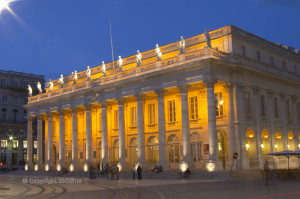 If by any chance you thought it was easy to be a politician, I can tell you that it is not. Alain Juppé, mayor for many years in Bordeaux and also a presumptive presidential nominee in 2017, angered feelings in Champagne when he promised Bordeaux producers to serve Crémant de Bordeaux at official events. The Champagne houses were quick to protest and they wondered (somewhat childish I think) if they should cease to serve and drink Bordeaux in Champagne.
If by any chance you thought it was easy to be a politician, I can tell you that it is not. Alain Juppé, mayor for many years in Bordeaux and also a presumptive presidential nominee in 2017, angered feelings in Champagne when he promised Bordeaux producers to serve Crémant de Bordeaux at official events. The Champagne houses were quick to protest and they wondered (somewhat childish I think) if they should cease to serve and drink Bordeaux in Champagne.
Everything turned out to be storm in a teacup (or maybe in a flute?) because apparently the mayor in Bordeaux already serves Crémant de Bordeaux at certain occasions and will continue to serve champagne at others. Nobody needs to get upset. Read more at sudouest.fr
Whether you want to go for sparkling wine from Champagne or Bordeaux you can do it with us at BKWine on either on a wine tour to Champagne or a wine tour to Bordeaux.
Fleur du Rhone 2012, Valais/Wallis | Birgitta’s wine of the month
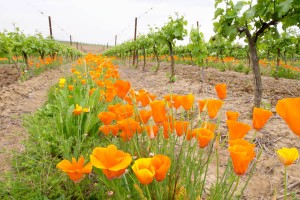 The grape variety Heida (also called paien) is the basis for this Swiss wine to 100%. You can find it in most grocery shops in the Basel region. It is an unusual grape variety in Switzerland where it is grown at altitudes up to 1150 metres. It originates from the French Jura region where it is known as Savagnin.
The grape variety Heida (also called paien) is the basis for this Swiss wine to 100%. You can find it in most grocery shops in the Basel region. It is an unusual grape variety in Switzerland where it is grown at altitudes up to 1150 metres. It originates from the French Jura region where it is known as Savagnin.
The wine is golden yellow. On the nose I find yellow fruit and flowers. Some wild strawberries, nuts and a bit of roundness (“fat”). The taste follows with the same characteristics in this quite full-bodied wine. A wine to simply enjoy as it is that will make you dream of warm summer days. Price: CHF 12.80 (~10.50 euro).
Algae, hormones, bacillus and plant extracts: new organic pesticides
Next year we will see new pesticides in the vineyard, developed for organic wine growers. And of course for others who want to limit their use of synthetic products. Vacciplant, from the company Goëmar, is based on laminarin (brown algae), and has been approved for use as a plant stimulator against powdery mildew.
Pheromones are already used against the grape worm (so-called sexual confusion) but BASF is now launching a new product that blends two kinds of pheromones and that will give a more even distribution over the vineyard. De Sangosse is also launching a product for sexual confusion where the big news is that you only need four capsules or less per hectare (existing sexual confusion products need significantly more).
A new insecticide based on bacillus thuringiensis, a bacterial extract, is underway but not yet approved. And Syngenta works with plant extracts that can hopefully be used in the fight against powdery mildew and botrytis. Read more on mon-viti.com
If you are interested to know more about organic wine and what organic producers are allowed to do in the vineyards, and in the wine cellar, then you can read our book Biodynamic, Organic and Natural Winemaking.
Design and fashion, or technical progress for fermentation tanks?
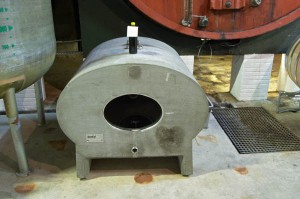 Fermentation tanks exist in many different models. And there will be more. At the Vinitech Show in early December some original things were presented. Among other things this vinification tank from oak barrel maker Radoux.
Fermentation tanks exist in many different models. And there will be more. At the Vinitech Show in early December some original things were presented. Among other things this vinification tank from oak barrel maker Radoux.
This hourglass-shaped tank has several advantages, it is claimed. One of them is that you can remove nothing but the pips if you like (while still keeping the skins in the tank). I first heard about removing the pips this September when I was visiting Val di Suga in Montalcino. I have never known this was something you actually wanted to do. Now I know. Removing the pips can sometimes be desirable. You never stop learning.
Also, I cannot resist showing you these adorable small steel tanks that goes by the name Ovni, that is Objet de vinification non identifié, thus “unidentified vinification object “, which also is the French abbreviation for a flying saucer.
(We were not at Vinitech so we don’t have our own photos. Therefore you will have to follow the links to see the tanks.)
Our press release on the new book in English noticed in media
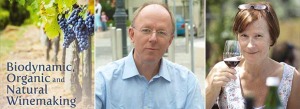 We are very proud that a British publisher contacted us and asked to publish our book on wine and the environment and organic wines in English. It is our first book in English (we have done four in Swedish). Perhaps it is even the first Swedish book on wine ever to be picked up by a foreign publisher? (Excluding Champagne of course.) Do you know of any other? We recently did a press release on the launch of the book and it has been picked up by some media (no, not by The New York Times). Read more on this on BKWine Magazine: “Biodynamic, Organic, and Natural Winemaking” press release has been noticed in media.
We are very proud that a British publisher contacted us and asked to publish our book on wine and the environment and organic wines in English. It is our first book in English (we have done four in Swedish). Perhaps it is even the first Swedish book on wine ever to be picked up by a foreign publisher? (Excluding Champagne of course.) Do you know of any other? We recently did a press release on the launch of the book and it has been picked up by some media (no, not by The New York Times). Read more on this on BKWine Magazine: “Biodynamic, Organic, and Natural Winemaking” press release has been noticed in media.
And the press release on the organic wine book.
Wine-searcher.com on our organic wine book: “perfect to learn about organic and biodynamic wines”
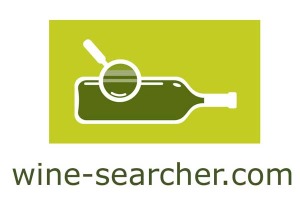 Wine-searcher.com has, since they branched out from being a pure wine price search engine to also be a wine news site, rapidly become one of the most read wine sites in the world. So we were very glad to see that they had decided to review our new book Biodynamic, Organic, and Natural Winemaking; Sustainable Viticulture and Viniculture.
Wine-searcher.com has, since they branched out from being a pure wine price search engine to also be a wine news site, rapidly become one of the most read wine sites in the world. So we were very glad to see that they had decided to review our new book Biodynamic, Organic, and Natural Winemaking; Sustainable Viticulture and Viniculture.
We were even happier when we read the overwhelmingly positive review by Robert Anding, under the title An Ode to Organics Without the Dogma. For example: “his book by Britt and Per Karlsson is perfect for people who want to learn about organic and biodynamic wines, and their ultra-orthodox relatives, natural wines. It neatly explains the differences between them and explains the various processes that are used in their production.”
Read more on this review (and see the full text) on BKWine Magazine: Wine-searcher on Biodynamic, Organic, and Natural Winemaking: “perfect book for people who want to learn about organic and biodynamic wines”
Wines we have tasted and liked recently
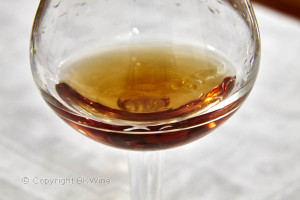 Uncorked: Under this heading we collect various wines that we have tasted, and liked, recently. It can be wines that we have had during dinner at home, at wine tastings, press lunches, visits to vineyards, or other occasions. This month: Mainly reds but first two very interesting whites and a rosé. Several from lesser-known (but not lesser!) wine regions: Muscadet, Austria, rosé from Bellet, Cahors, Switzerland, Rhone Valley, Burgundy, Beaujolais, Languedoc, Valpolicella, the Roussillon, and even Bordeaux.
Uncorked: Under this heading we collect various wines that we have tasted, and liked, recently. It can be wines that we have had during dinner at home, at wine tastings, press lunches, visits to vineyards, or other occasions. This month: Mainly reds but first two very interesting whites and a rosé. Several from lesser-known (but not lesser!) wine regions: Muscadet, Austria, rosé from Bellet, Cahors, Switzerland, Rhone Valley, Burgundy, Beaujolais, Languedoc, Valpolicella, the Roussillon, and even Bordeaux.
Read more on BKWine Magazine: Uncorked: Good wines we have tasted recently, December 2014
Detailed and in depth atlas on Australia’s wine regions
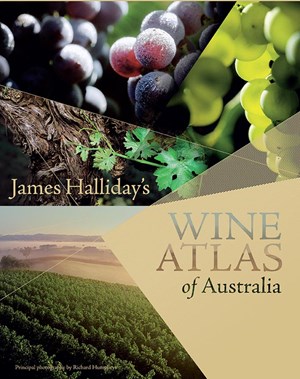 James Halliday’s Wine Atlas of Australia has recently been published in a new edition. This is a substantial book on all the wine regions of Australia. It is a must for anyone who plans to travel around the Australian wine regions but also a valuable reference for anyone who wants to know about Australian wines.
James Halliday’s Wine Atlas of Australia has recently been published in a new edition. This is a substantial book on all the wine regions of Australia. It is a must for anyone who plans to travel around the Australian wine regions but also a valuable reference for anyone who wants to know about Australian wines.
Read all of Per’s book review on BKWine Magazine: James Halliday’s Wine Atlas of Australia | Book Review. [divider_flat]
Tom Cannavan, wine-pages, says nice things on our book on organic wines
![]() Tom Cannavan at Wine-Pages.com has just published a review of our new book Biodynamic, Organic and Natural Winemaking. For example: “A fairly heavyweight tome, dense with information, and yet full of quite absorbing detail that made it interesting for me to dip in and out of as chapters caught my attention.” Read more on BKWine Magazine: Tom Cannavan, Wine-Pages, on Biodynamic, Organic and Natural Winemaking: “well-argued, heavyweight tome, absorbing detail”.
Tom Cannavan at Wine-Pages.com has just published a review of our new book Biodynamic, Organic and Natural Winemaking. For example: “A fairly heavyweight tome, dense with information, and yet full of quite absorbing detail that made it interesting for me to dip in and out of as chapters caught my attention.” Read more on BKWine Magazine: Tom Cannavan, Wine-Pages, on Biodynamic, Organic and Natural Winemaking: “well-argued, heavyweight tome, absorbing detail”.
The ten best sparkling wines
 Every wine, or wine type, has its “best in the world” competition these days, it seems. Sparkling wine too of course. And since we are getting closer to the peak sparkling wine season (or have perhaps just passed it, depending on when you read this – but then you need some as consolation) of the year the news of the results of The World’s Best Sparkling Wine competition (or Effervescents du Monde) is timely.
Every wine, or wine type, has its “best in the world” competition these days, it seems. Sparkling wine too of course. And since we are getting closer to the peak sparkling wine season (or have perhaps just passed it, depending on when you read this – but then you need some as consolation) of the year the news of the results of The World’s Best Sparkling Wine competition (or Effervescents du Monde) is timely.
We have listed the top ten (thirteen actually) sparkling wines in the competition “Effervescents du monde”. Read Per’s article on BKWine Magazine: The world’s best sparkling wine in 2014 is… [divider_flat]
Comprehensive book about Rioja and Northwestern Spain
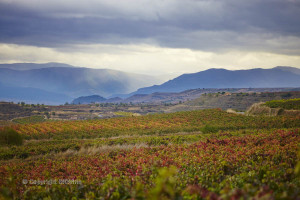 Rioja is popular right now and we have a feeling that more and more people want to discover, or rediscover this classic Spanish wine region. One way to do that is to read the book The Finest Wines of Rioja and Northwest Spain. It’s probably the most modern and comprehensive book about the wines of Rioja.
Rioja is popular right now and we have a feeling that more and more people want to discover, or rediscover this classic Spanish wine region. One way to do that is to read the book The Finest Wines of Rioja and Northwest Spain. It’s probably the most modern and comprehensive book about the wines of Rioja.
Read more on BKWine Magazine: our review of the book The Finest Wines of Rioja and Northwest Spain [divider_flat]
Sherry, from bargain to rarities, from Gonzales Byass
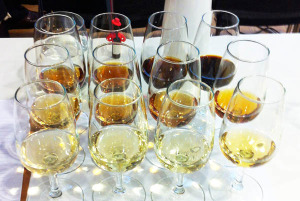 Sherry is becoming more and more popular in Sweden and worldwide. At least, that is what we hope and believe. Sherry is an amazing wine and all wine lovers should definitely discover this wine if they have not already done so.
Sherry is becoming more and more popular in Sweden and worldwide. At least, that is what we hope and believe. Sherry is an amazing wine and all wine lovers should definitely discover this wine if they have not already done so.
One of the big sherry houses, Gonzales Byass, visited Sweden recently and BKWine’s reporter Carl Erik Kanne took the opportunity to try 13 different sherries together with the Gonzales Byass’ head winemaker Antonio Flores (an appropriate name, and if you do not understand why, it is time that you learn more about sherry). Read Carl-Erik’s story on BKWine Magazine 13 delicious sherries and an introduction to the district with Gonzalez Byass’ head winemaker.
Wine chemistry made a little easier
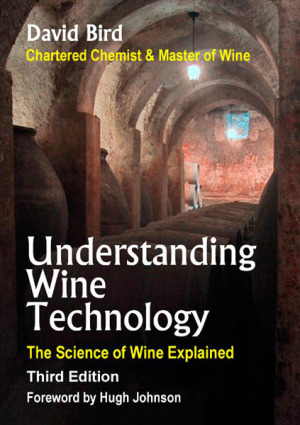 The book Understanding Wine Technology by chemist and Master of Wine David Bird is for everyone who is fascinated by what is happening inside a fermentation tank and an oak barrel. What makes a wine taste the way it does and what tools do the wine makers have to help their wines along the way to stable and great tasting end products? You get many answers in this book.
The book Understanding Wine Technology by chemist and Master of Wine David Bird is for everyone who is fascinated by what is happening inside a fermentation tank and an oak barrel. What makes a wine taste the way it does and what tools do the wine makers have to help their wines along the way to stable and great tasting end products? You get many answers in this book.
Read more on BKWine Magazine: our review of Understanding Wine Technology. [divider_flat]
Taylor’s, a port house with a long history
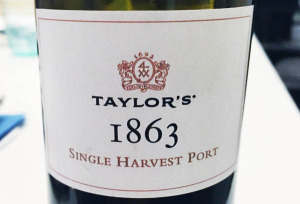 Taylor’s is one of the most famous port wine houses, with a long history and many exciting wines in the cellar in Vila Nova de Gaia. Taylor’s produces everything from young and unpretentious ruby port to 151 years old tawny.
Taylor’s is one of the most famous port wine houses, with a long history and many exciting wines in the cellar in Vila Nova de Gaia. Taylor’s produces everything from young and unpretentious ruby port to 151 years old tawny.
BKWine Magazine’s reporter Wilhelm Arnör met Taylor’s export manager Jorge Ramos when he was to Stockholm to present a collection of port wines, ranging from young and powerful vintage port, over a series of amazing Tawnies and Late Bottled Vintages to a splendid Port antique from 1863. Read all of Wilhelm’s report on BKWine Magazine: Port Wine to enjoy now, and for laying down. From vintage 2011 back to 1863!
Gaia Gaja on a visit, showing her top wines from Piedmont
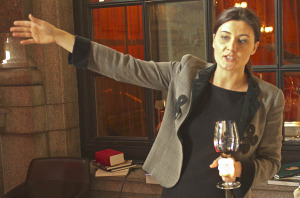 For a long time Barbaresco had to make do with playing second fiddle to Barolo. But then came one person who changed everything. That person’s name was Angelo Gaja.
For a long time Barbaresco had to make do with playing second fiddle to Barolo. But then came one person who changed everything. That person’s name was Angelo Gaja.
Angelo Gaja is a great personality in the Italian wine world. Maybe he is the most famous of all Italian wine producers. He wines are sold at high prices, sometimes very high. They are sought after throughout the world and in some countries, like the US, they have achieved cult status. It is Angelo’s daughters who now run the firm and one of them, Gaia Gaja, was recently in Sweden to present the family’s wines. BKWine Roland Eriksson met her.
Read his story on BKWine Magazine: We meet Gaja: a quality pioneer in Barbaresco and Piedmont.
Wine events calendar
Send us an email if you have some event you want on the calendar.
Don’t be an egoist! Share with your friends and other wine enthusiasts! Forward the Brief to your friends! Suggest that they sign up for a free subscription !
© Copyright BKWine







